When I told my Korean hairdresser, Scott, that I was visiting Seoul, his response was hardly reaffirming. “Why would you want to there?” he huffed. Aaron reckons his old home-town is just too big, too busy and too polluted. Heaving with 10 million work-hard, play-hard residents, Seoul is a non-stop, neon-drenched, throbbing metropolis.
But despite the swarm of humanity pounding its pavements and the drifting presence of Made-in-China desert dust besmirching its skies, Seoul soon got under my skin. Billed as one of the world’s leading tech-smart cities, its public transport system is a marvel of efficiency.
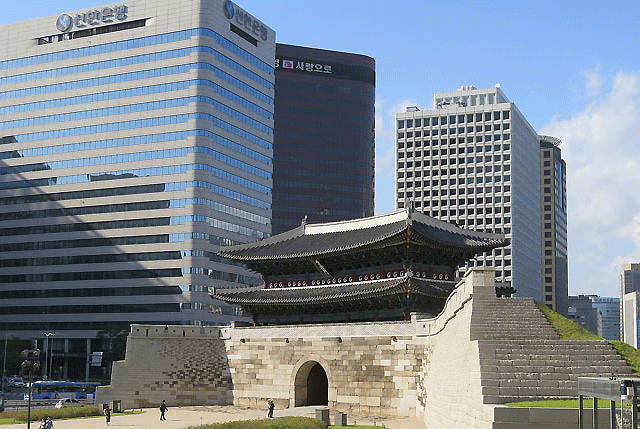
In the city that bestowed upon the world MP3 players, touch screen cellphones, K-pop and kimchi, its history is pockmarked with brutality, tragedy and drama – and that’s before you even get to the horror of the Korean War. Falling under Japanese occupation from the late 19th century until the end of World War II, that narrative is never far from the surface as you explore the sights and learn about the demise of Korea’s royal rulers, the Joseon Dynasty, who ruled the roost for over 600 years.
I was principally in Seoul to tick-off the DMZ from my bucket list. Whether you find yourself here on a stopover or extended city-break, here’s a few essentials that should be part of any self-respecting foray. There’s a variety of royal palaces clustered around the central city including Gyeongbokgung, the city’s premier palace which has performed a Phoenix-like resurrection on several occasions, from the cinders of destruction.
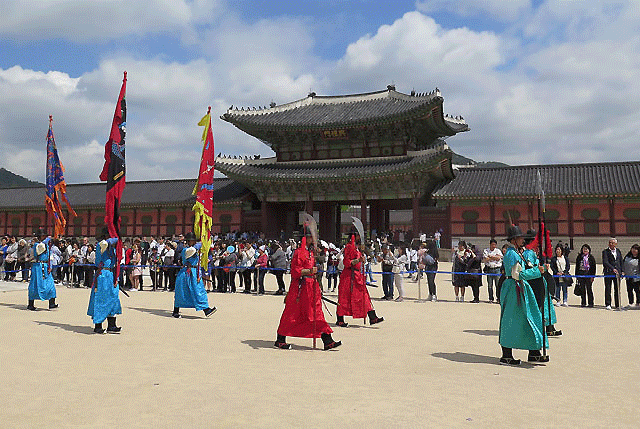
A highly theatrical and musical Changing of the Guard is performed daily, around the main entrance gate of Gwanghwamun. The blaze of colourfully costumed regalia is a patriotic fist-pump – loved by the locals as much as the selfie-stick toting tourists. Gyeongbokgung translates as the Palace of Shining Happiness and it’s a colossal compound of astounding architecture, ornamental gardens and vivid history.
It previously contained 800 building and 200 gates. The Joseon kings had several thousand servants at their disposal within the royal household, including 500 ladies-in-waiting and 400 eunuchs. Trying to get your head around the sheer extravagance of this imperial relic is best decoded with a good guide. I explored the palace as part of a city tour with VIP Travel, who run a great-value and illuminating guided sightseeing service.
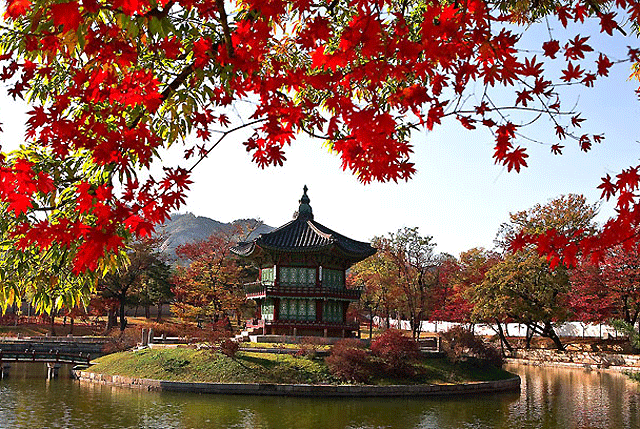
This principal royal residence was first razed by the Japanese, when they invaded in 1592. After lying in ruins for nearly three hundred years, it was lavishly reconstructed by the monarchy, bankrupting the government in the process. Only a few years later, in 1895, the Empress was slain by Japanese assassins who broke into the palace, followed by fifty years of Japanese colonial rule.
Once again the palace was mangled by the Japanese, with the entire front section and palace destroyed, to make way for a Japanese colonial construction. Going full circle, that was levelled in the 1990s and a meticulous reconstruction of the main gate was completed. Further reconstructions, across the palace compound, are continuing.
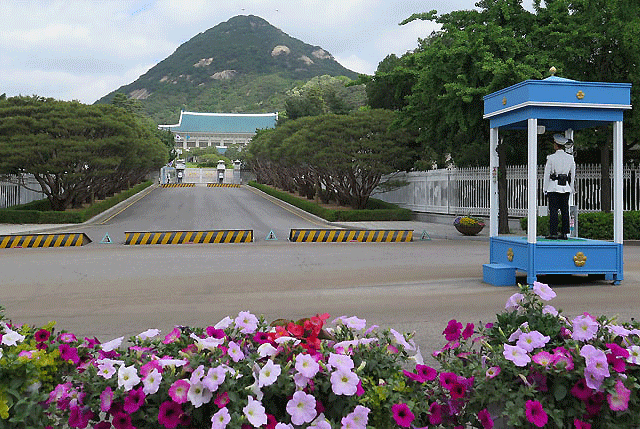
I arrived into the city by fast train from Incheon Airport, and one of the first imposing landmarks to stop me in my tracks was Namdaemun, the city’s South Gate, resplendently restored after being bombed during the Korean War. (There’s a searing exhibition of John Rich photographs, taken throughout the war years, which is free to view just off the Plaza.) The gate forms part of Seoul’s old city walls, of which 70% are remarkably intact.
Over 600 years old, the 18km circuit wraps around the city core and threads together the four guardian mountains that stand watch over Seoul. If you’re up for a spectacular hike, the most photogenic section zips you across Bukak-san, the highest of the four peaks at 342 metres, standing guard over Korea’s seat of power. The summit viewpoint overlooks the Blue House, Korea’s presidential palace, serving up a fascinating perspective.
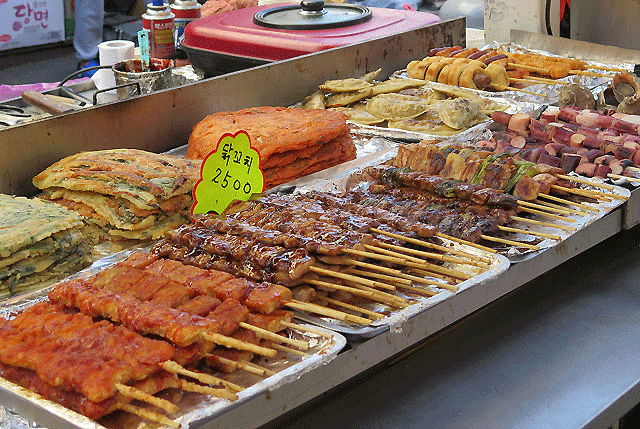
The streets of Seoul are packed with culinary delights and a one-stop-shop for bargain buys and great bites is the Namdaemun Market, a frenetic night-and-day emporium that sprawls for blocks and is Korea’s biggest market. Whether its clothing, accessories or handicrafts, each section comprises hundreds of stalls, spilling across pedestrianised streets.
The sensory overload is most graphically illustrated by the profusion of food stalls, sizzling with binge-worthy things on sticks and in bowls, sprawling all over the market. My biggest hurdle was the lack of time or stomach space to sample it all. Best bites include sujebi, a shellfish and dough soup; gyeranppang, a golden oblong-shaped muffin crowned with a moist whole egg on top; odeng, fishcake skewers seasoned in spring-onion soup; tteokbokki, spicy rice cakes that are revved up with red-pepper paste; and dakkochi, the ubiquitous barbequed chicken on skewers in a sticky, tangy sauce.
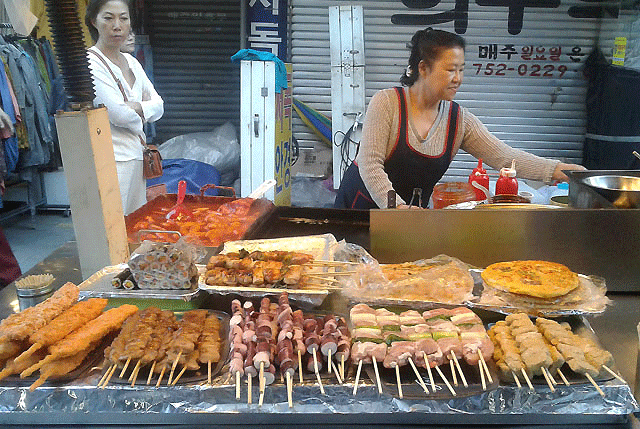
They are nearly as pervasive as kimchi, Korea’s great staple of salted, seasoned and fermented vegetables – mainly made from Chinese cabbage. Kimchi pancakes are great for breakfast. Seafood pancakes, packed with squid and leeks is another popular meal on the run. Don’t leave town without trying Korean doughnuts, hotteok, fat and spiced pancakes stuffed with sunflower seeds, peanuts, red beans and honey.
I noshed heartily on the streets of Seoul, but I drew the line at live octopus eaten straight from the tank, still squirming, and grilled chicken anus. Namdaemun Market is centrally located in Myeong-dong, which is Seoul’s shopaholic mecca. All of the global fashion heavyweights are here, alongside chic Asian faves and the temple-like department stores.
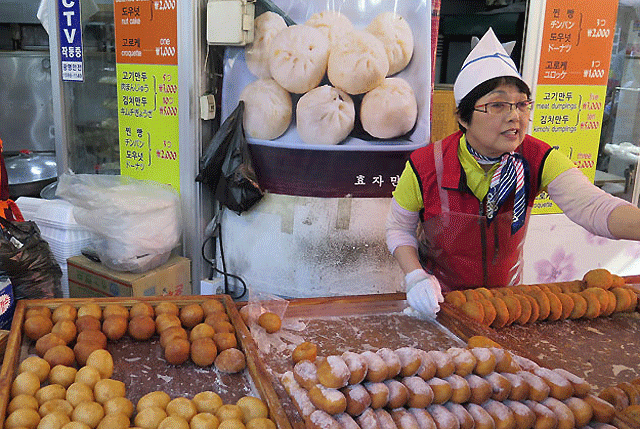
Pop into Mitsukoshi, the Harrods of Seoul, and the city’s oldest department store with a vast and opulent food hall in the basement. My local guide told me that 20% of Seoul’s women have facial surgery. They binge on cosmetic perfectionism and you’ll see a surfeit of specimens in Mitsukoshi!
Another stand-out district worth dipping into is Bukchon, an easy stroll from the city centre, which boasts nearly a thousand traditional Korean homes, called Hanok. Narrow laneways wrap around this treasured cluster old Seoul, so it’s a dreamy place to get completely lost in. The patterned and tiled designs and Dragon’s Ridge rooflines are stark contrast to the glittering forest of skyscrapers flanking Bukchon.
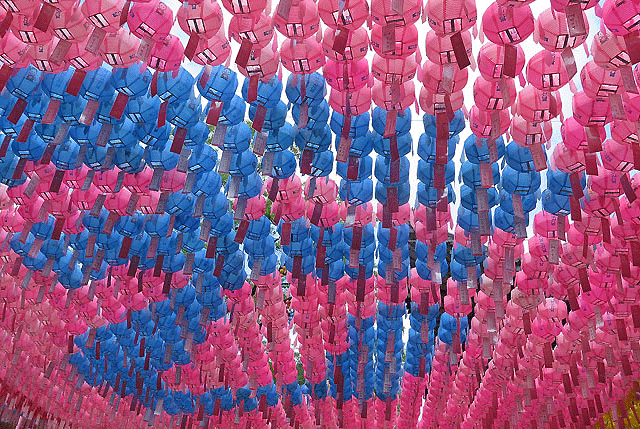
I also paid a visit to Jogyesa Temple, the centre of Korean Buddhism. The temple was built in the late 14th century and was once reduced to ashes due to fire, rebuilt in 1910 by many monks. namely Han Yong-un and Lee Hee-gwang. The temple was given a role as the head temple of Korea’s Buddhism and renamed Jogyesa Temple as a result.
Dharma Hall serves as the main venue for several Buddhist events, holding rituals, lectures, ceremonies, throughout the year. The annual lantern festival in celebration of Buddhist’s birthday also takes place at this temple. And draped across the site, it was the multi-coloured garlands of lanterns each bearing a personal wish, which lifted my spirits, when I ventured through the temple. A retina-burning explosion of joyful, hope-filled colour.
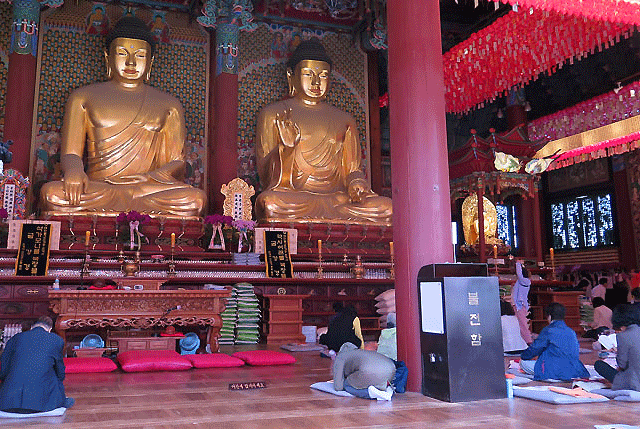
Perfectly perched in the heart of Seoul’s cultural district, Courtyard by Marriott Seoul Namdaemun delivers a distinct experience, with the carnival colour of Namdaemun Market, right across the road. Just one year old, this engaging property still has new-hotel-smell, and elegantly furnished with all the creature comforts you’d expect from an ultra-contemporary hotel.
Wi-Fi is free and lightning-fast, guestrooms are spacious and the city views are electrifying. You’ll enjoy 24-hour access to the generously equipped fitness centre, outstanding concierge services, impeccable hospitality and all-day dining is available at Momo Café. The artfully presented breakfast buffet includes a tempting selection of Korean specialties. Load up on those kimchi pancakes!
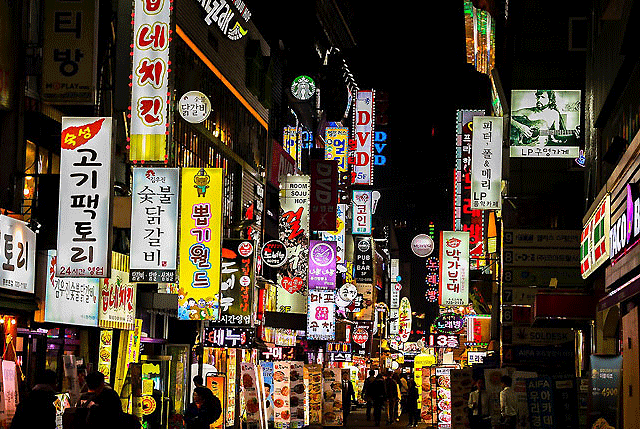
If you want to push the boat out, upgrade to Executive Lounge access, where you can enjoy an elevated, indulgent and exclusive space loaded with privileges, headlined by complimentary Happy Hour drinks and meal-worthy bites, showcasing a wide palette of Asian culinary delights. Leave room for the salivating deserts. For best rates and seasonal deals, book at courtyard.marriott.com

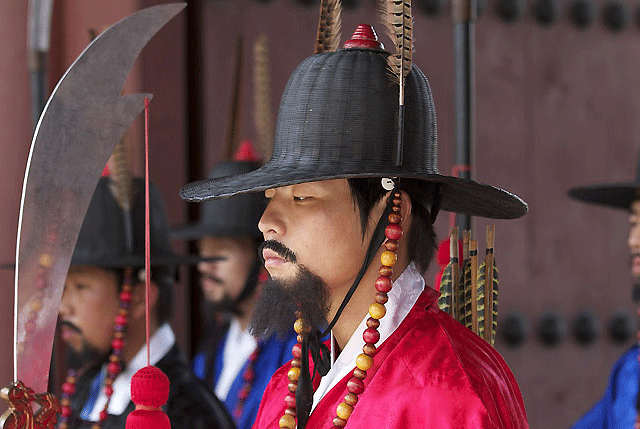
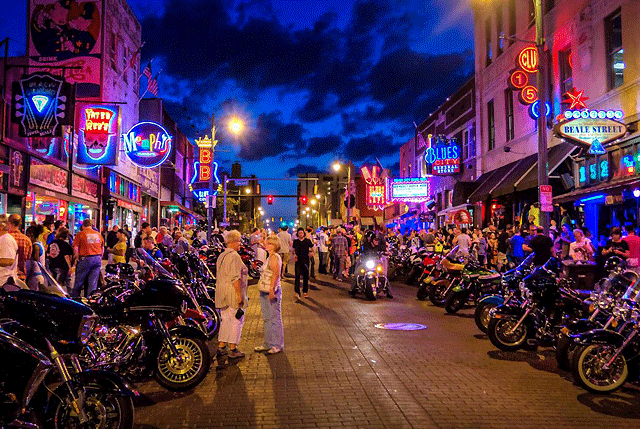
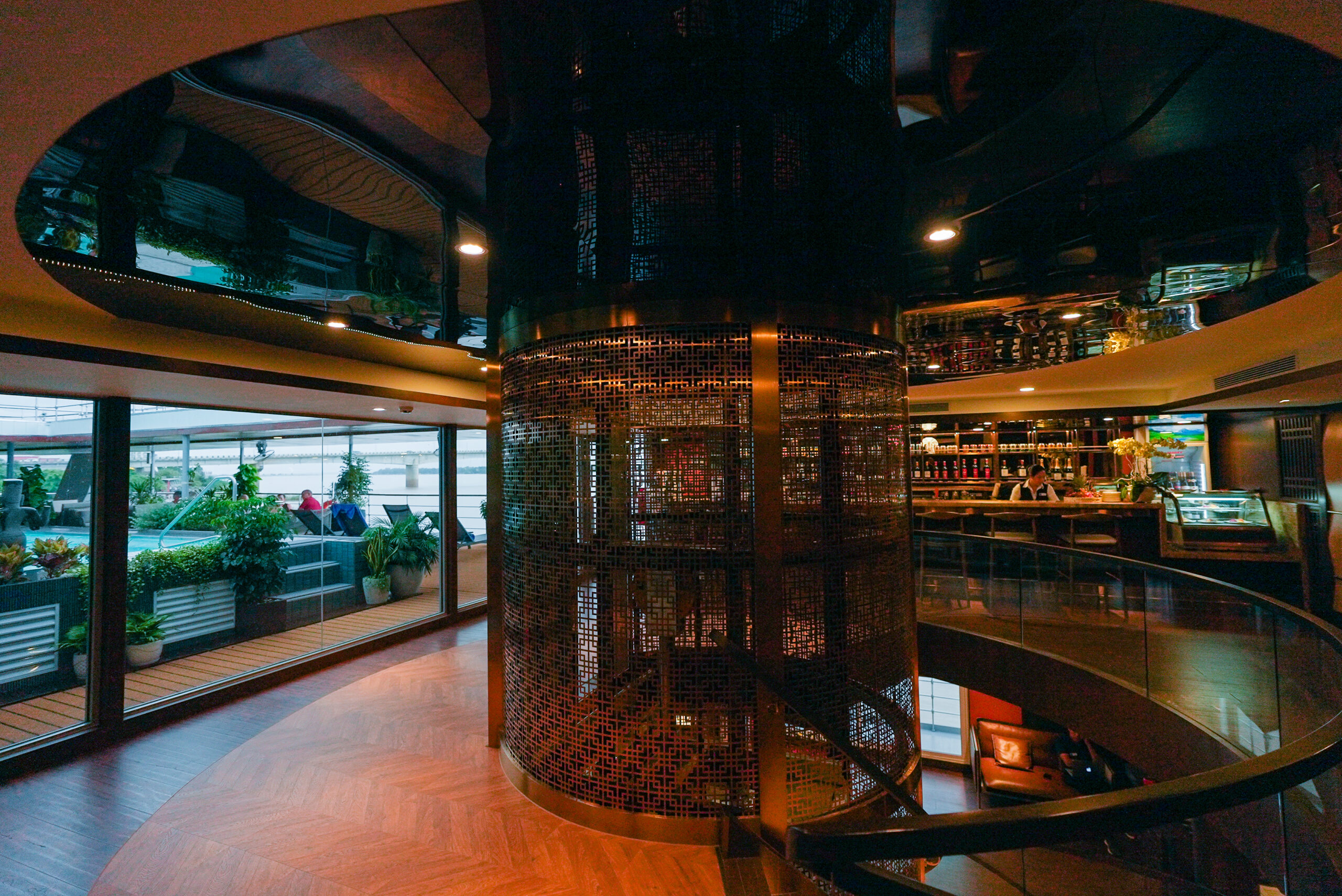
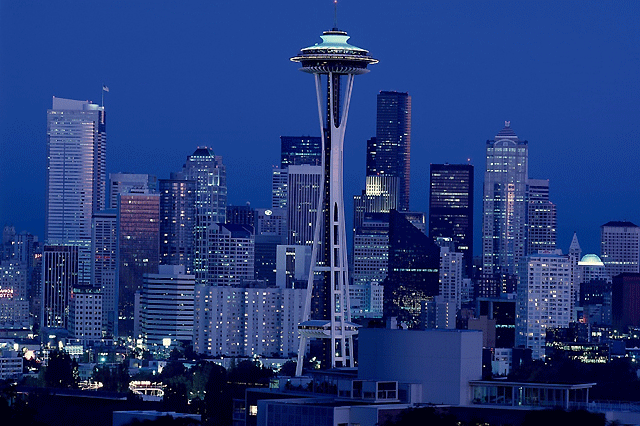
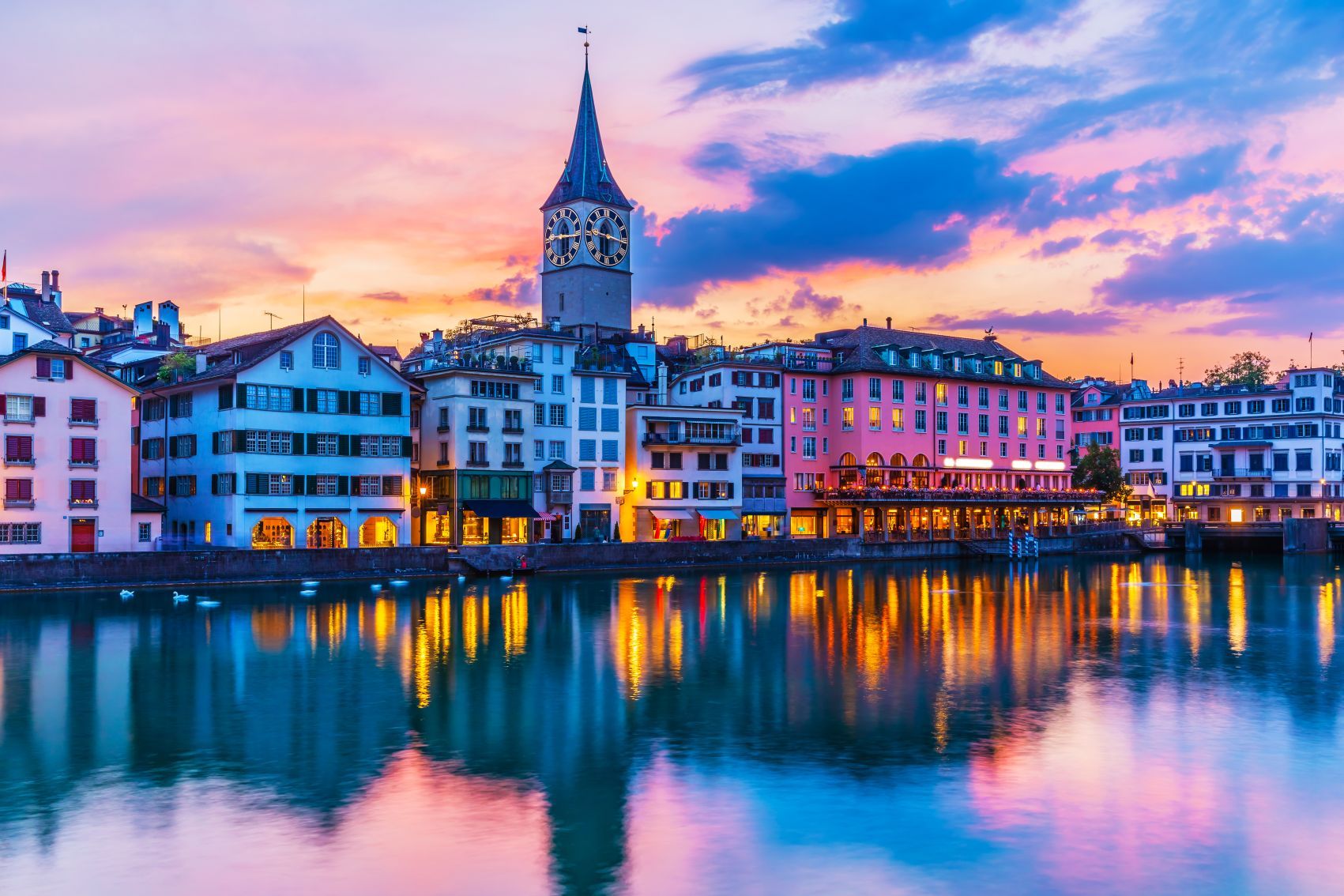
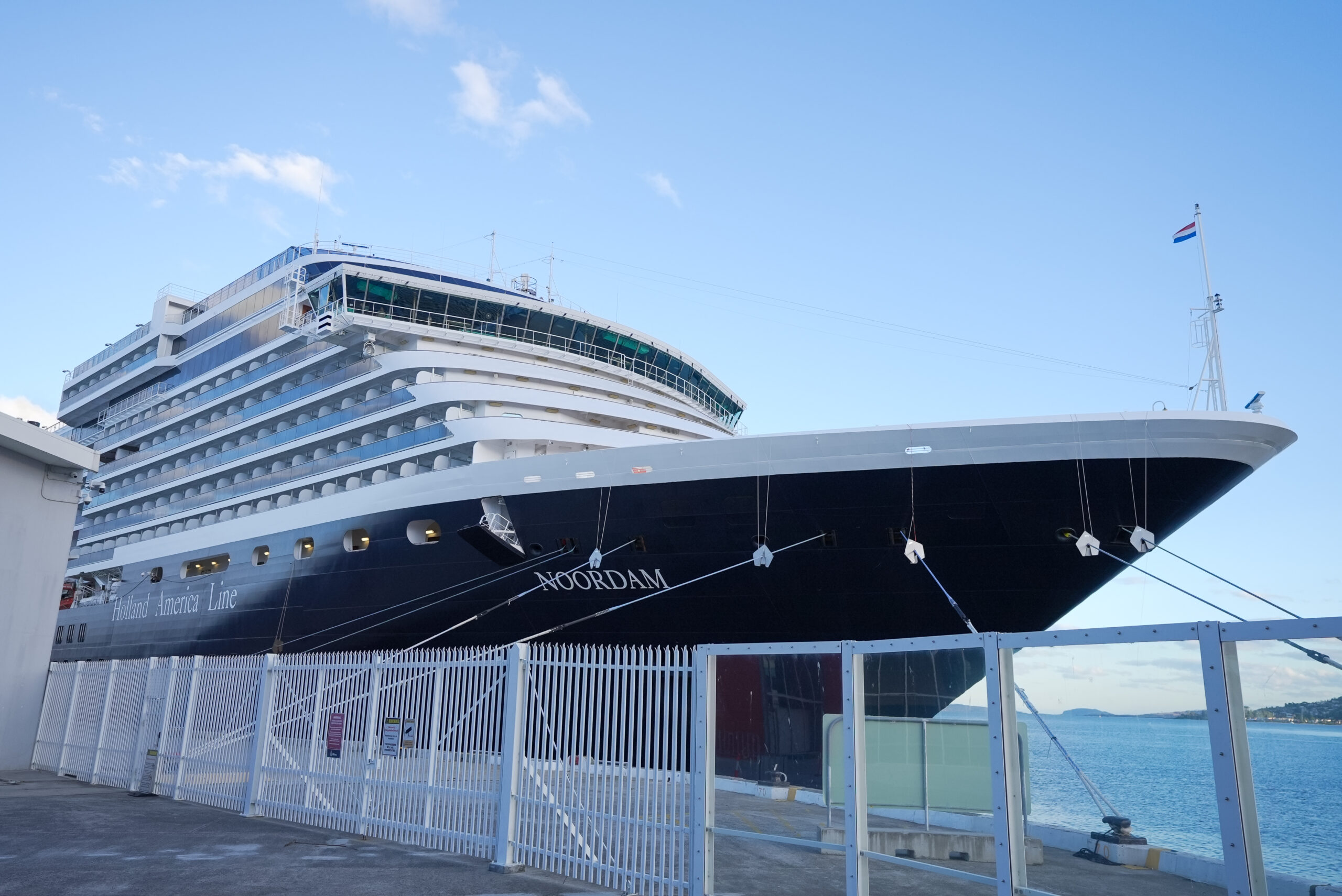
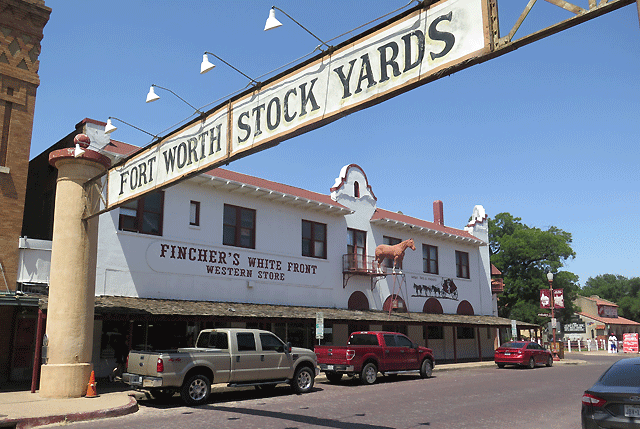

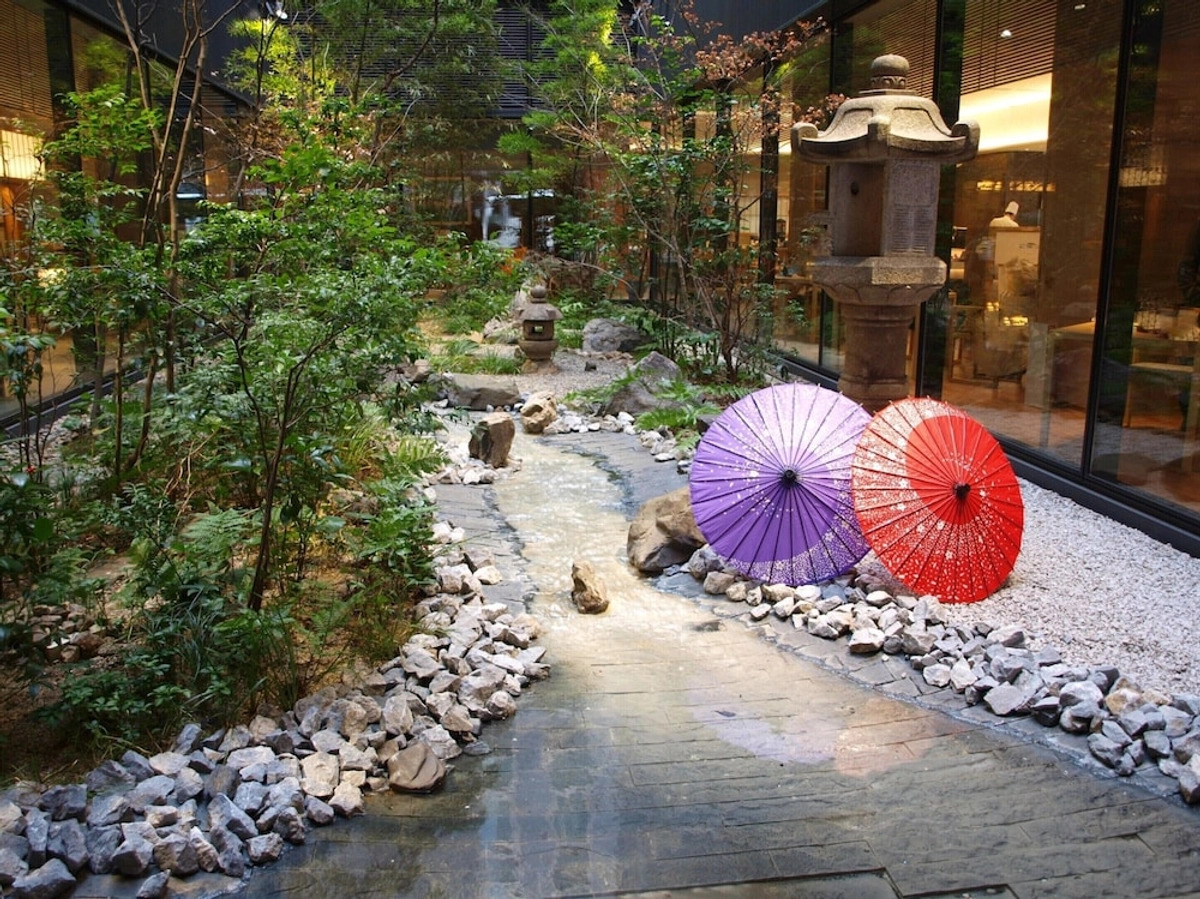



Recent Comments